Leftover Celery Leaf Pesto
Celery Leaf Pesto, a super simple pesto sauce recipe that uses celery leaves instead of basil! This quick and delicious recipe is a great way to reduce food waste and uses just a handful of ingredients.
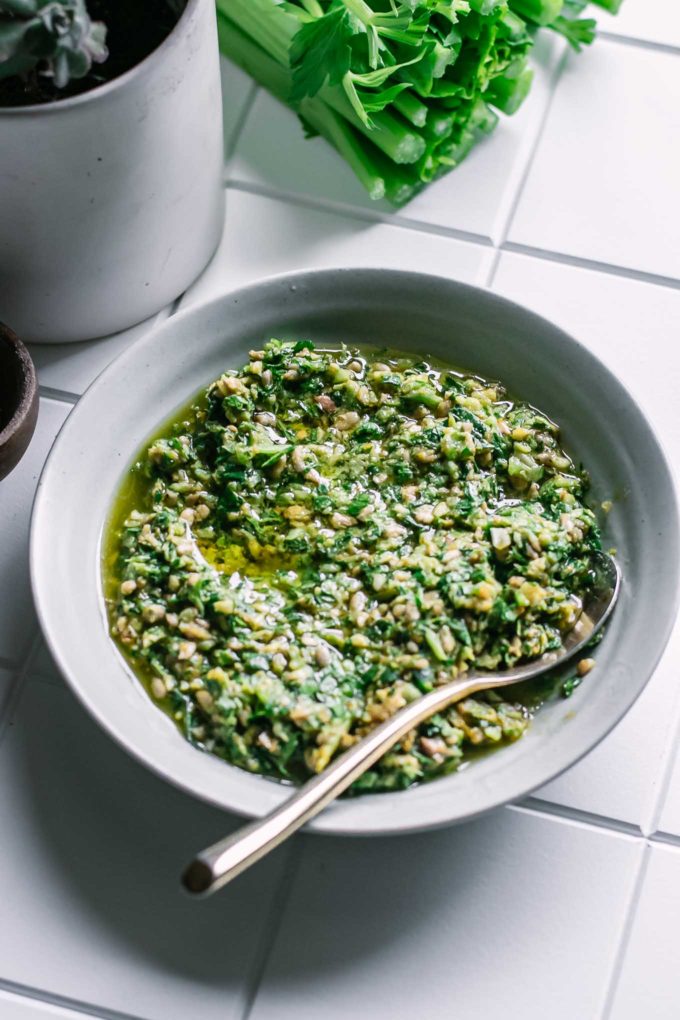
Want to Save This Recipe?
Enter your email & I’ll send it to your inbox. Plus, get new plant-based recipes in your inbox!
By submitting this form, you consent to receive emails from Fork in the Road.
Want to make pesto, but don’t have basil on hand? Why not make pesto with celery leaves instead? You can make pesto with just about any type of herbs and greens. One of our favorite alternative pesto recipes uses celery tops.
👉 Here are FOUR reasons why you should make pesto with celery leaves:
- It’s delicious! Pesto tastes so good no matter how you make it. The celery leaves in this recipe add a note of freshness that complements well with the rest of the ingredients.
- It’s eco-friendly. Celery leaves are often thrown out because people don’t realize they’re edible. This recipe re-purposes them to save them from the compost or trash can!
- It’s easy to make. This recipe comes together in 5 minutes with just a few quick steps. Simply blend the greens with nuts or seeds, nutritional yeast, garlic, salt, and pepper.
- It’s flexible. Add celery leaf pesto sauce to pizza, vegetables, soups, or pasta…the possibilities are endless for what you can do with this delicious sauce.
Ready to learn how to make pesto from celery leaves? Let’s do it!
🌱 Ingredients you’ll need
- Celery Leaves: Leafy greens and herbs are the primary ingredients in pesto, and we used celery leaves for this recipe. Not only do they add freshness to pesto, they also provide important vitamins and minerals including vitamin A, vitamin K, potassium, and folate.
- Nuts or seeds: Pine nuts are used in traditional pesto, but you can make it with other varieties of nuts, like cashews or walnuts. You can even make it nut-free with pumpkin seeds or hemp seeds!
- Nutritional Yeast: A vegan cheese-alternative with a savory flavor. We used this as a substitute for parmesan cheese in this recipe.
- Olive oil: Adds flavor to pesto and helps maintain its texture so that it doesn’t become too thick.
- Garlic, salt, and pepper. These are common pesto seasonings that you can adjust to your liking.
- Optional Ingredients: Balance out the pesto with acid and brighten the flavor with a squeeze of fresh lemon juice.
- Recommended tools: A food processor or blender, knife set, cutting board, and salad spinner are the main tools you will need to make celery leaf pesto.
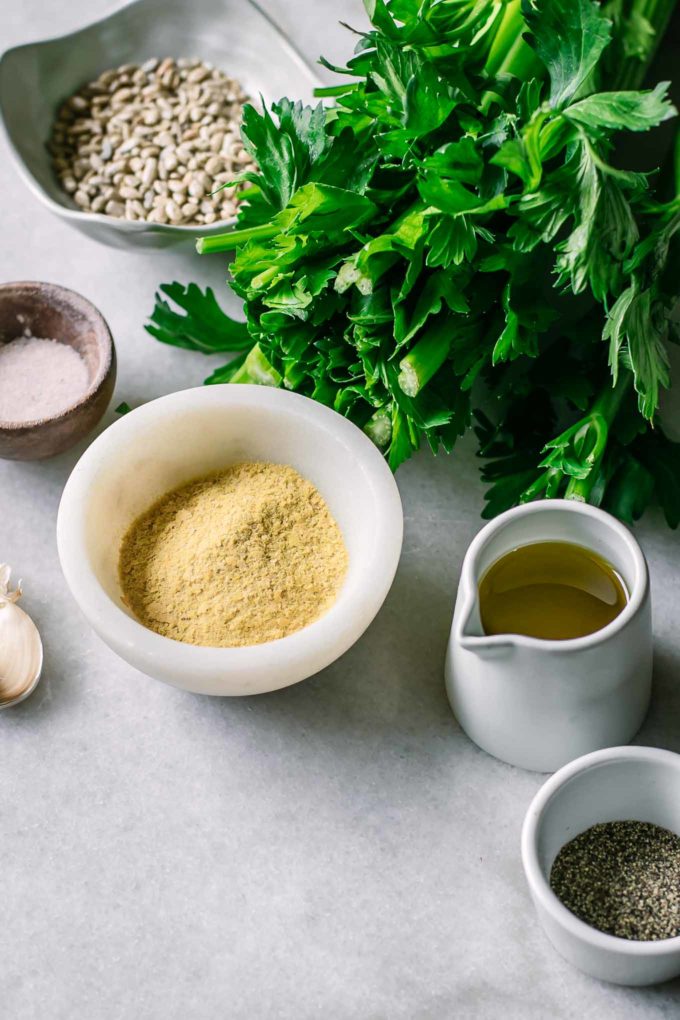
🥣 How to make (step-by-step photos)
1️⃣ Step One: Wash + prep celery leaves
Start with washing the celery leaves by submerging in a bowl of water. Remove any dirt from the leaves, then take out of the bowl and lay flat on a plate or kitchen towel to dry. You can also use a salad spinner to dry the leaves.
Before making the pesto, remove any remaining hard stems from the greens.
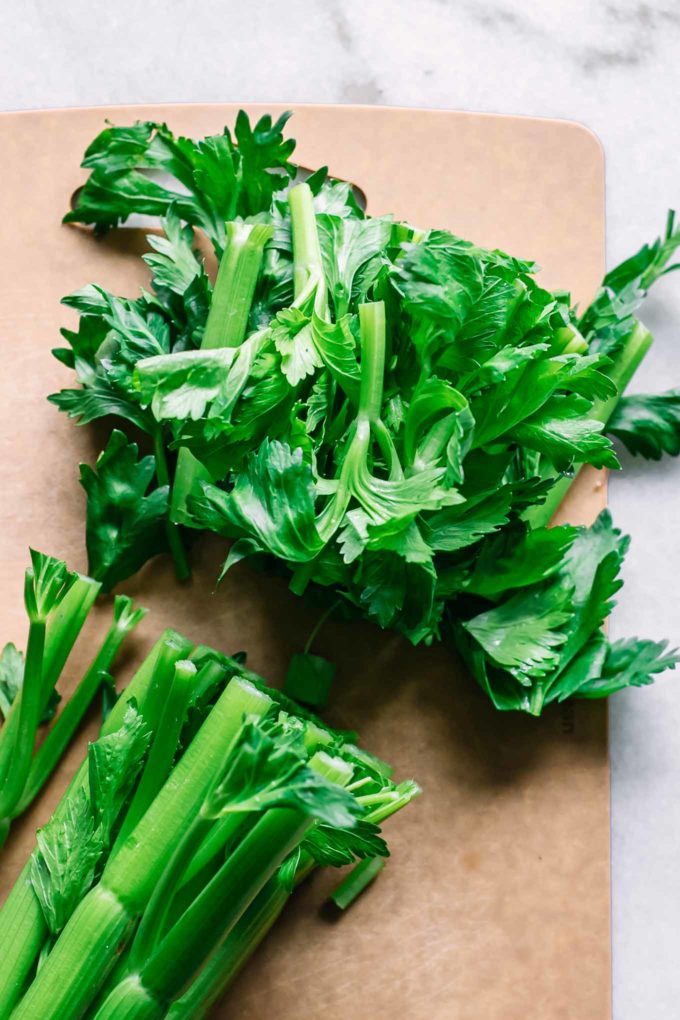
2️⃣ Step Two: Blend the greens, nuts or seeds, garlic, and oil
Toss the celery leaves in a food processor. Add nuts or seeds and garlic cloves, and pulse until finely chopped.
As the ingredients are being blended, slowly drizzle in olive oil and continue to pulse until the chopped ingredients are well coated in oil but not completely smooth (you will want the pesto to be a little chunky)
Slowly drizzle in olive oil while pulsing the ingredients. Pulse until the chopped ingredients are well coated in oil, but still chunky.
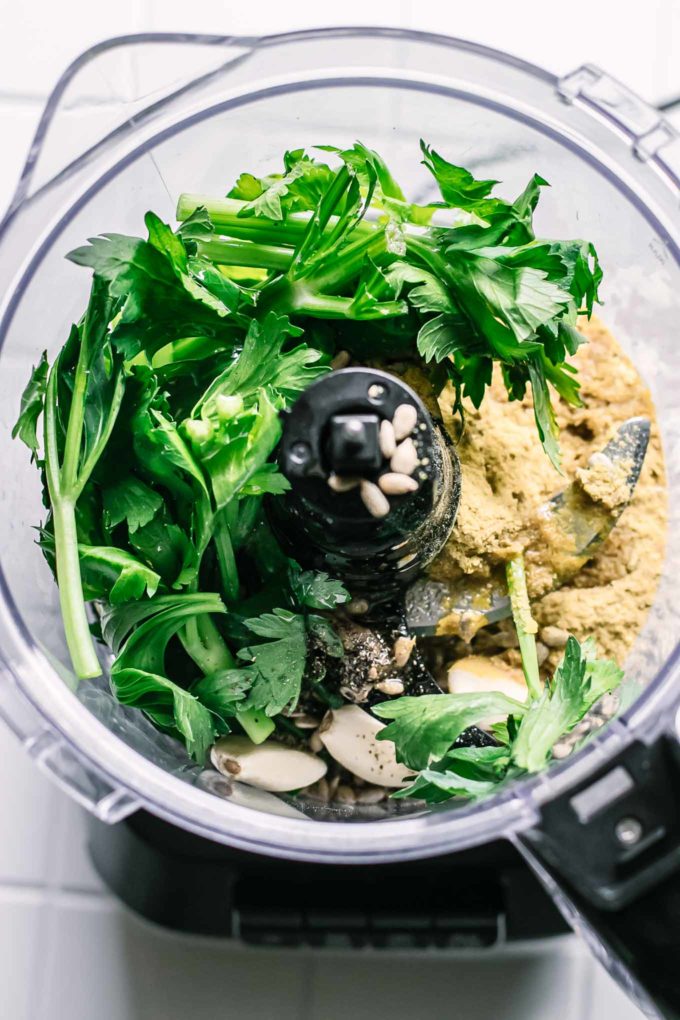
3️⃣ Step Three: Mix in nutritional yeast, spices, and lemon juice
Finish off the pesto by slowly adding nutritional yeast, salt, and pepper. Give it a taste and add more seasoning until the pesto is flavored to your liking!
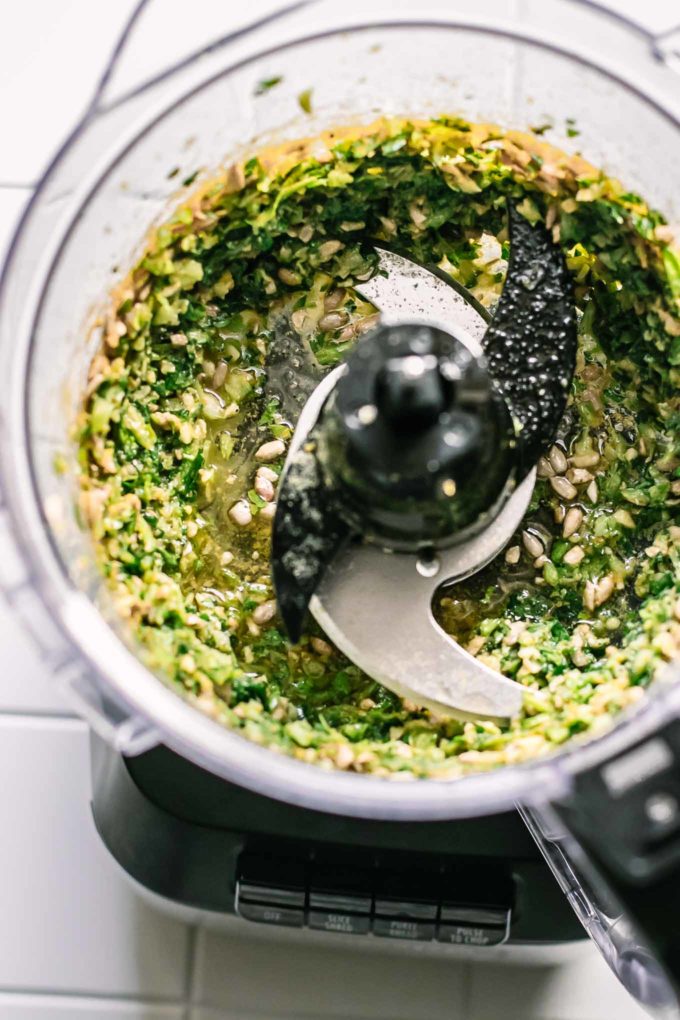
❓ Recipe questions + quick tips
You can use celery leaves and tops to add freshness and nutrients to a variety of dishes. They can be blended into soups or used as a garnish. You can also mix them into salads with other greens and veggies. Celery leaves can be used to make pesto and other sauces, and make a great topping for pizza!
Pesto sauces can be used to add flavor to many types of dishes. It tastes great in pasta, pizza, soup, and sandwiches. Pesto can also be used as a dip for vegetables, cooked into bread, or mixed with salad dressings.
Parmesan cheese is a key ingredient in traditional pesto, which is not vegan-friendly. To make pesto vegan, you need to find a substitute for parmesan cheese, such as nutritional yeast. You can also make pesto without cheese or cheese alternates, and keep the flavor up with ingredients like lemon juice instead.
If you follow a plant-based or vegan diet, the best substitute for parmesan cheese in pesto is nutritional yeast. You can also use other types of cheese in place of pesto, such as asiago or pecorino romano.
While pine nuts are used in traditional pesto recipes, it can be made with many types of nuts and seeds. We recommend using pumpkin seeds, walnuts, cashews, pistachios, or hemp seeds if you’re looking for a replacement.
🥪 How to serve
There are so many fun ways to enjoy pesto! Its versatility and deliciousness make it a great addition to just about any dish. Here are some ideas for how to serve celery leaf pesto:
- Use as a sauce or spread. Pasta, pizza, bowls, sandwiches – you can’t go wrong with using pesto as a sauce for just about any dish.
- Use as veggie dip. Pesto and veggies make the perfect pair! You can mix pesto into hummus or use it on its own as a dip. Try it with any vegetable of your choice, like raw carrots, broccoli, or cauliflower!
- Add to salad dressings. Pesto can easily be mixed into salad dressing. Simply combine it with more olive oil and lemon juice, then pour it over your favorite salad.
- Use it as a topping for soup. Add flavor to your soup by using pesto as a garnish. We suggest trying it with our Roasted Tomato Leek Soup.
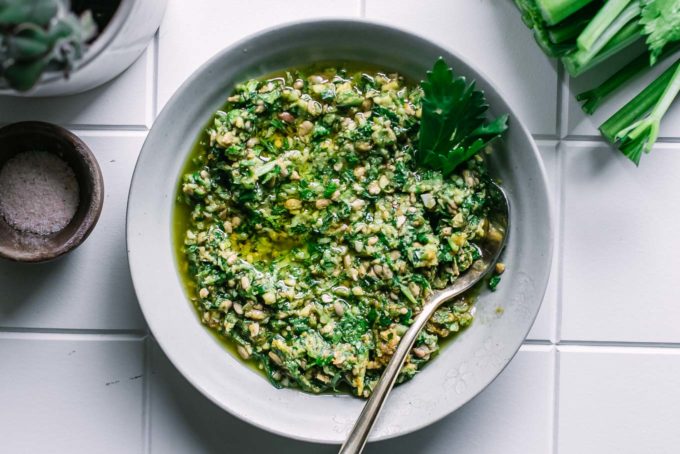
🧊 How to store
One of the best things about pesto is that you can make a small amount to use all at once, or make a big batch to store and use to make quick meals. Here are some storage tips for celery leaf pesto:
- Refrigerator storage: Keep in an airtight container for up to 1 week.
- Freezer storage: Store in a sealed freezer-safe container for up to 6 months.
Pro tip: To prevent browning, it is a good idea to drizzle a thin layer of olive oil on the surface of pesto before putting it in the refrigerator or freezer. You can add pesto to ice cube trays, freeze, and transfer to a freezer-safe storage bag. Having small amounts on hand are perfect for when you need a quick flavor enhancer!
♻️ Sustainable kitchen tips
Making celery leaf pesto is a great way to reduce food waste. Here are some ways to make it even better for the planet:
Make it during celery season! Add celery to your grocery list while it’s in season. The growing season for celery is year-round in California but find out where celery is in season near you here.
Use other leftover greens and herbs. If you have them on hand, you can use other greens or herbs in celery leaf pesto. Carrot greens, radish greens, kale, arugula, and spinach are all great options!
Make celery leaf pesto in bulk. Stock up on celery while it’s seasonal, and then make big batches of pesto sauce. That way, you’ll have homemade pesto on hand for months to come and don’t need to worry about buying it at the store.
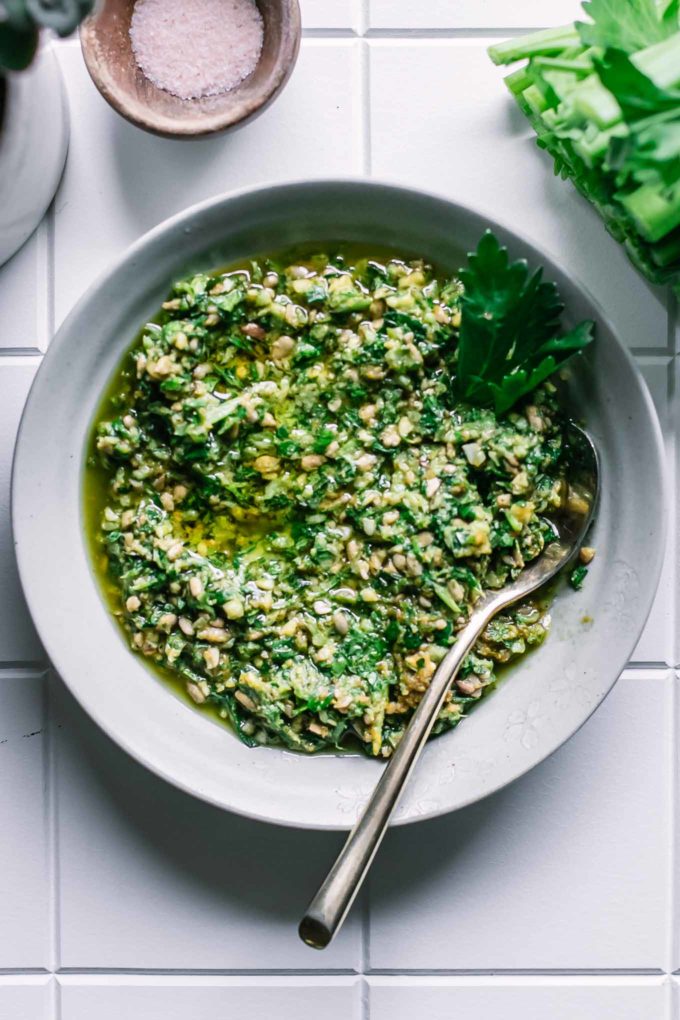
💚 More pesto recipes
Can’t get enough pesto? Look no further! Here are more vegan pesto recipes:
- Radish Greens Pesto
- Spinach Pesto
- Arugula Pesto
- Kale Pesto
- Broccoli Stem Pesto
- Carrot Greens Pesto
- Beet Greens Pesto
- Cilantro Pesto
Looking for more ways to use celery? Try our Crunchy Celery Apple Salad or Beet Greens Vegetable Soup.
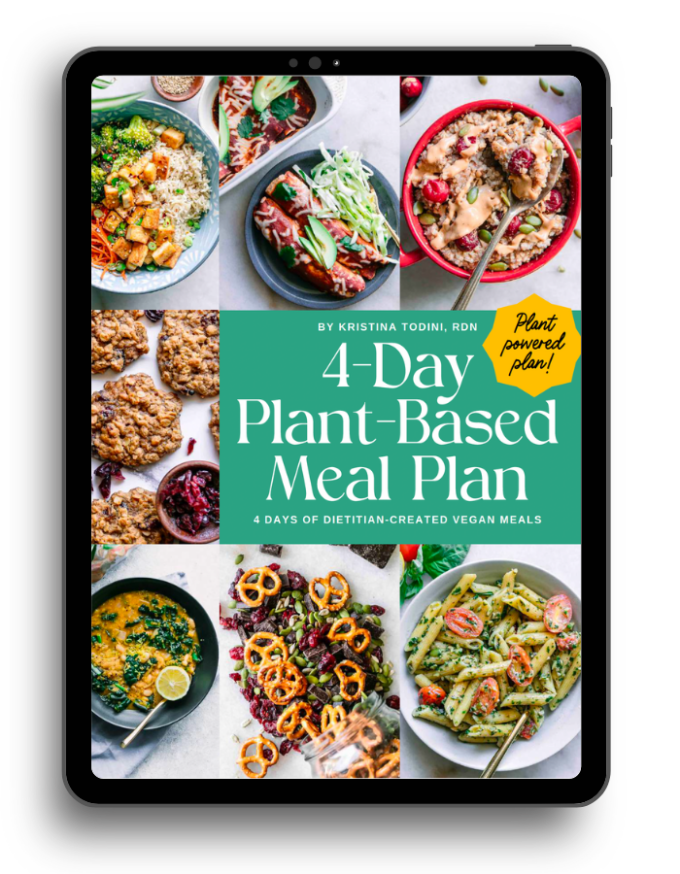
NOT SURE WHERE TO START WITH PLANT-BASED EATING?
Get my 4-Day Plant-Based Meal Plan to start your journey on the plant path.
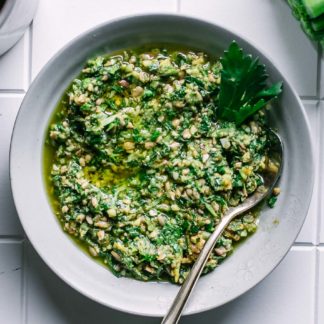
Leftover Celery Leaf Pesto
Ingredients
- 2 cups celery leaves from about 1 bunch
- ⅓ cup pine nuts or other nuts or seeds
- 2 whole garlic cloves
- ½ cup olive oil extra virgin
- ⅓ cup parmesan cheese or nutritional yeast
- 1 pinch salt and pepper
- Optional: squeeze of fresh lemon juice
Instructions
- Wash + prep the celery leaves: Start by submerging celery leaves in a bowl of water and cleaning it off, making sure to remove any dirt. Us a salad spinner to dry it or lay the celery leaves flat on a plate or kitchen towel.
- Blend ingredients: Toss the cleaned and dried celery leaves in a food processor. Next, add nuts/seeds and garlic cloves. Pulse until finely chopped, slowly drizzling in olive oil until the chopped ingredients are well coated in oil but still chunky.
- Add seasonings to taste: Finish by adding in nutritional yeast, salt, and pepper. Give the pesto a taste and add more seasonings until it's flavored to your liking.
Notes
- Nuts or seeds? Traditional pesto sauce uses pine nuts, but any nuts or seeds are perfect for pesto.
- Tools Needed: food processor or blender, knife set, cutting board, salad spinner
- Prep ahead: Make this simple pesto up to 2-3 days before serving, or freeze until ready to use
- Leftovers + storage: Leftover pesto should be stored in an airtight container in the refrigerator for up to four days, and in the freezer for up to 2 months (possibly longer).
- Nutrition notes: This recipe made as written (with nutritional yeast and pine nuts) is plant-based and gluten-free.

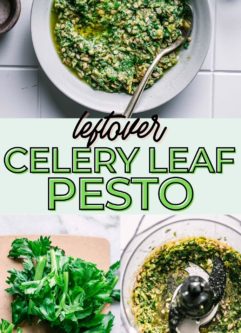
I made this and was very pleasantly surprised at how tasty it was! Even before adding the nutritional yeast, salt and pepper it tasted great! I used pumpkin and sunflower seeds. I’m so glad to have a way to utilize all those celery leaves!
I’m so glad you liked this, Anna! Thanks for leaving your review.